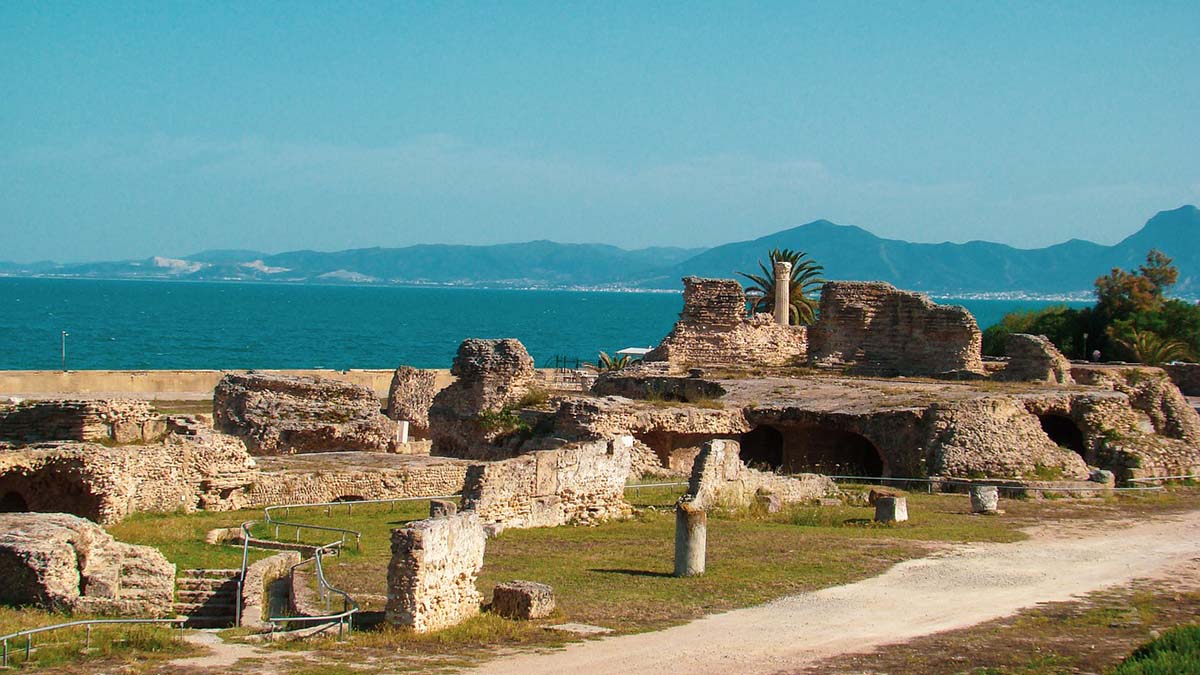
by Hollie Mantle
Why visit Tunisia? For the fresh sea breeze, the even fresher fish, and the balmy blues of the Mediterranean? Prettily packaged as a sun, sea and sand destination, most tourism touts fail to point out the thing that makes Tunisia such an enigmatic pull for the historically or culturally-inclined traveller is the Roman past that lurks beyond the shore.
Tunisia was the stage for the first Roman siege on African soil between 149-146 BC. The locations where the Romans settled, chopped and changed the landscape, and added their own stamp of traditional Roman-ness are still plentiful, despite subsequent takeovers and rule.
Traditional mosaics, great and grandiose amphitheatres, as well as original Roman villas still litter the landscape of today’s Tunisia, offering visitors an insight into the Roman rulers that once presided here, in one of the most powerful locations of their ancient empire.
Carthage
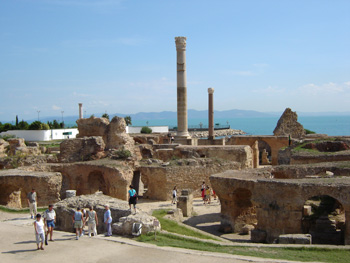 The grip of Roman imperialism was nowhere so dominant in Tunisia as in the city of Carthage – Tunisia’s most famous site of ancient Roman ruins. Although the Romans initially ravaged and destroyed much of the city upon invasion, they subsequently rebuilt it in the style of Rome. Its favourable position and two harbours made it a grand hubbub of expensive, imported goods.
The grip of Roman imperialism was nowhere so dominant in Tunisia as in the city of Carthage – Tunisia’s most famous site of ancient Roman ruins. Although the Romans initially ravaged and destroyed much of the city upon invasion, they subsequently rebuilt it in the style of Rome. Its favourable position and two harbours made it a grand hubbub of expensive, imported goods.
By the turn of the 1 century (AD), the city was the second largest in the western half of Rome’s empire. Eventually destroyed again in 698 AD, the remains of Carthage stand nowadays as a testimony to its previous rulers.
Visitors to the area should make a special effort to visit the Antonine Baths, constructed from AD 145 to AD 165 and the Kobba Bent el Rey – one of the better preserved residential ruins in Carthage which dates back to the 4th century. Zitouna Mosque in Tunis, made from the columns of the temples and churches of Ancient Carthage, is worth a visit if you want to catch a glimpse of what use has been made since of the remnants of the Roman Empire.
Dougga – Capitol
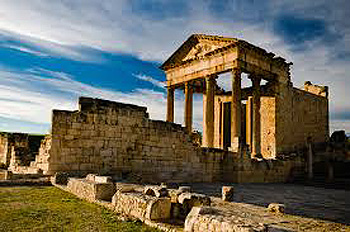 In the North West of Tunisia, the small town of Dougga stands as an impressively intact testimony to the Roman rulers that once dominated here (though the remaining monuments are by no means solely Roman in origin). The town is thought to have been founded during the reign of Julius Caesar, and became a small, prosperous town complete with theatres, baths and roman villas in the style for which they have becomes so famous. For those visiting the country today, this is a must-see area.
In the North West of Tunisia, the small town of Dougga stands as an impressively intact testimony to the Roman rulers that once dominated here (though the remaining monuments are by no means solely Roman in origin). The town is thought to have been founded during the reign of Julius Caesar, and became a small, prosperous town complete with theatres, baths and roman villas in the style for which they have becomes so famous. For those visiting the country today, this is a must-see area.
The Capitol, which stood in tribute to the gods Jupiter, Juno and Minerva, is in fantastic condition, with the columns and most of the roof still perfectly intact, reminiscent of counterparts in Rome (although infinitely less busy or expensive!). The mountainside location of these ruins make them slightly out of the way, but they are well worth the effort.
Sousse – Mosaics Museum
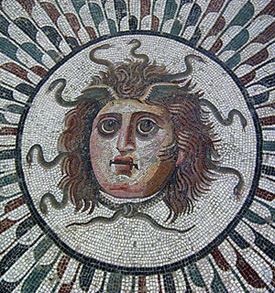 Though not a hotbed of archaeological sites in itself, the coastal town of Sousse hosts an incredible array of Roman mosaics, rescued from the various excavated sites around the country. Displayed in its Archaeological museum, the collection isn’t overwhelmingly large, but is one of the bigger collections of authentic mosaics in Tunisia.
Though not a hotbed of archaeological sites in itself, the coastal town of Sousse hosts an incredible array of Roman mosaics, rescued from the various excavated sites around the country. Displayed in its Archaeological museum, the collection isn’t overwhelmingly large, but is one of the bigger collections of authentic mosaics in Tunisia.
Make a special effort to see the Triumph of Neptune. It depicts the God of the sea carrying a trident and standing in a chariot drawn by two hippocamps (half horse, half fish). The cost of entry for the museum is nine dinar and it’s great on a hot day, when the cool underground vaults and shady courtyard provide cool respite from the sweltering heat!
Musti
Although the temples of Musti have suffered over the centuries, this is a fantastic, small town where you won’t have to budge the other tourists out of the way for a good photo shot. At the Temple of Ceres – the Roman goddess of agriculture – the columns still stand tall amidst the fields that once hosted a large farming population (although the roof and walls have not suffered a bit). The remains of other temples, those dedicated to Pluto and Apollo separately, can also easily be identified in the area, but are slightly beaten down compared to those in Dougga.
Bulla Regia
 Emperor Hadrian granted Roman citizenship to the inhabitants of this town, perhaps because of the wealth of grandeur there. The archaeology unearthed is testament to the many wealthy homes and residential areas.
Emperor Hadrian granted Roman citizenship to the inhabitants of this town, perhaps because of the wealth of grandeur there. The archaeology unearthed is testament to the many wealthy homes and residential areas.
Those wanting to see the remains of a traditional Roman Bath should visit the Bath of Julia Memmia – the arches and bathing areas are still clear to see and it’s easy to imagine what the site that once existed here must have looked like.
El Jem
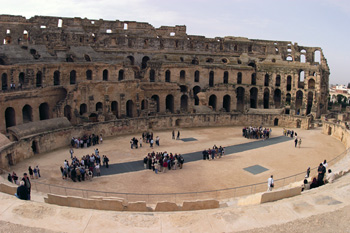 In El Jem sat the centrepiece of the reputable area once known as Thysdrus, the second most important Roman municipality in Africa after Carthage. The magnificent amphitheatre, though now slightly dilapidated, once seated an enormous 43,000 spectators (the 02 arena in London holds under half of that, with 20,000 seats). This makes it the third largest amphitheatre to have existed during Roman rule.
In El Jem sat the centrepiece of the reputable area once known as Thysdrus, the second most important Roman municipality in Africa after Carthage. The magnificent amphitheatre, though now slightly dilapidated, once seated an enormous 43,000 spectators (the 02 arena in London holds under half of that, with 20,000 seats). This makes it the third largest amphitheatre to have existed during Roman rule.
It’s thought that the site was mainly used for gladiator shows and chariot races. The arches, elliptical stone walls and tiered seats are still visible in most places – perhaps making it more worthy of a visit than the tourist-favourite Coliseum.
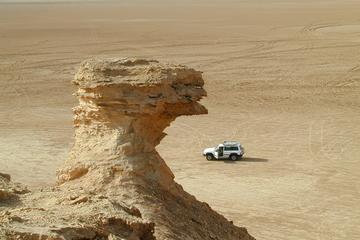
South of Tunisia: Sousse, Mahdia, Douz 3-Day Guided Tour from Hammamet
If You Go:
♦ El Jem – El Jem is situated south of Sousse and can easily be reached by train.
♦ If you’re visiting Sousse, check out the Medina (more information here)
♦ More information and pictures of Dougga
About the author:
Hollie Mantle is a history and travel writer currently living in London, and has written for publications such as The History Press, Cooler Magazine and several magazines in Japan.
Photo credits:
First Carthage photo by ledinaa from Pixabay
All other photos are by Hollie Mantle


